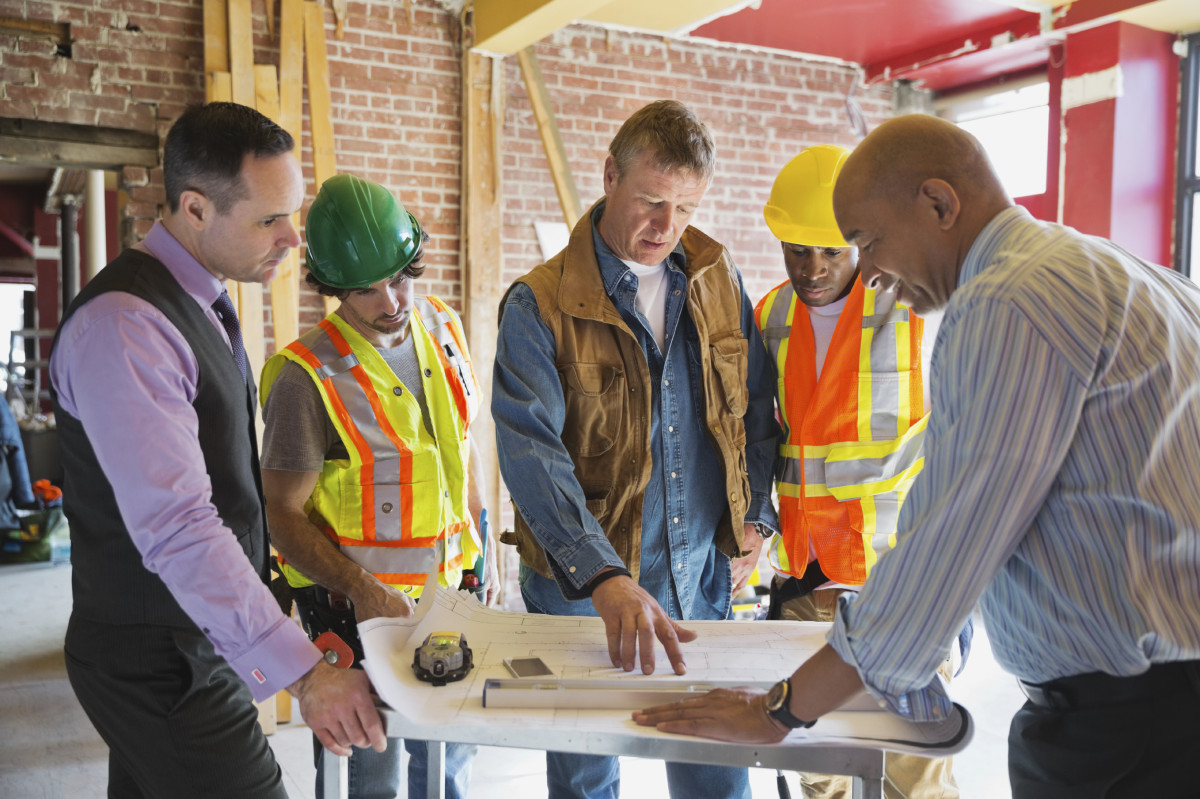Blueprint for a solid relationship
12 Jun 2014, Business Tips, Featured, Prove Your Know How

How to get the most out of working with an architect.
While some builders find architects difficult to deal with, others find their design skills, expertise and fondness for pushing the boundaries paves the way to a rewarding build.
In March 2014, architect Nat Cheshire won the Home New Zealand Magazine 2014 Home of the Year Award. For Oakland Homes director Peter Oakden, working with such a great architect was well worth any extra effort.
“Building for an architect can be extremely rewarding and satisfying, but it can also be challenging because of the different demands,” says Peter. “Architects’ designs are often extremely creative and they like to push the boundaries.”
Most builders want their projects to progress as smoothly and as calmly as possible. However, undertaking a complex build can be bumpy, so ensuring you have a good working relationship with your architect could be a worthwhile investment.
Below are some pointers to take into account when working with architects (and which apply equally to dealing with designers, contractors and homeowners).
1. Appreciate your architect’s passion
Architects develop unique designs based on the particular requirements of their clients, the possibilities of the building site, and the requirements of the Building Act and local bylaws. Fused together with artistic creativity, they give birth to stunning, enduring and (sometimes) public masterpieces. So don’t be surprised if your architect is extremely passionate about their work.
2. Understand your architect’s objective
The perspective of the architect is quite different from that of the builder. While both are focused on completing the build, the builder concentrates more on technical detail while the architect’s focus is on the finished product.
While you need to know the construction drawings inside out to carry out the build, you also need to be able to picture the finished product that will satisfy the architect. So, study the elevations and landscaping features until you get a clear picture of the completed project. Try to imagine the flow as the client uses rooms and enjoys features and check out things like view lines, join lines and finish details.
Find out what details are important to your architect and clarify the reasoning behind these. It may be that a detail you consider expensive or complicated to build – and therefore unnecessary – is exactly what is required to give the building the finished appearance the architect has imagined.
Remember, your architect is primarily concerned about how the home is presented at the finish rather than how it’s built, as that’s what they’re judged on.
3. Don’t presume
If you’re unsure about anything, ask for clarification.
You may wish to suggest a detail or material to the architect that suits you better than the solution stipulated in the plans – though you should always consult your client and bear in mind it may require amendment to consent (by the architect).
This is especially the case where you might be uncertain about the purpose of a section and need to make an interpretation – make sure you verify what your architect is aiming to achieve.
4. Frequent open and honest discussions
In any building project, it’s the level of communication that often determines how smoothly it flows.
From the beginning, make sure you maintain regular communication with your architect either in person or via phone or email. It’s a good idea to keep them updated with a weekly progress report – especially if they haven’t visited the job for a while.
Maintaining open communication channels builds the foundation for honest discussion, making it much easier to discuss sensitive issues – such as if you disagree with a detail, or you have a “better” suggestion.
5. Update your architect with schedule changes
Changes in schedule are quite normal with most architectural builds, as some things may go faster or slower than you expected. However, you can minimise frustration by keeping your architect updated, so they can finalise details in time.
It is frustrating for both architect and builder when detailing is late – especially too late!
6. Never cover errors or carry on regardless
When you stuff something up, come clean quickly. If it’s not right, then do it again – or at least offer to do so. Architects are human (so they tell us) and make mistakes as well. Sometimes you come across details which you know will lead to problems – stop and sort it out sooner rather than later, including who is going to pay for the variation.
7. Maintain professional relationships
Sometimes a builder gets caught between loyalty to the architect (who may refer other clients in future) and loyalty to the client (who engaged the architect).
For example, imagine that the owners told you how much they hated the lack of privacy in their existing house – you notice the ground floor bedroom window will line up with a window in the neighbouring property. Changing the height of the window so that the sill is higher will mean the neighbours can’t see in. Do you speak to the owner and/or bring it up with the architect? Or do you say nothing?
If you believe there is a real opportunity for the client then you must bring it up; do so professionally, because you respect the architect, and strategically, because you want the best outcome for the client.
8. Enjoy the journey
Architects are passionate about their work and aim to deliver a high level of excellence. Those builders who learn to work with them are likely to share in that excellence and grow their building skill and prowess.
About The Successful Builder
Graeme Owen, based in Auckland, is a builders’ business coach. Since 2006, he has helped builders get off the tools, make decent money, and free up time for family, fishing, and enjoying sports. Get his free ebook: 3 Reasons Builders Lose Money and How to Fix Them for High Profits at http://TheSuccessfulBuilder.com
Register to earn LBP Points Sign in



